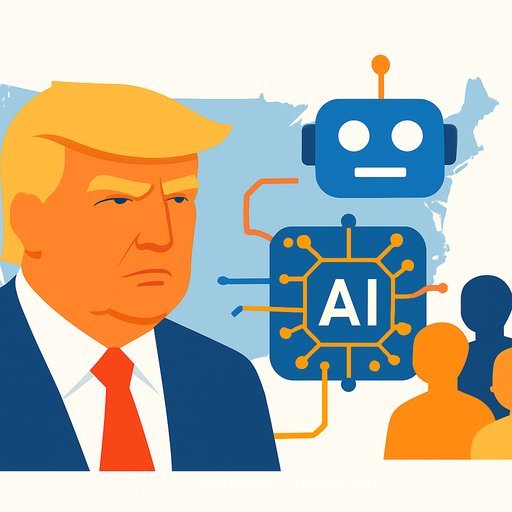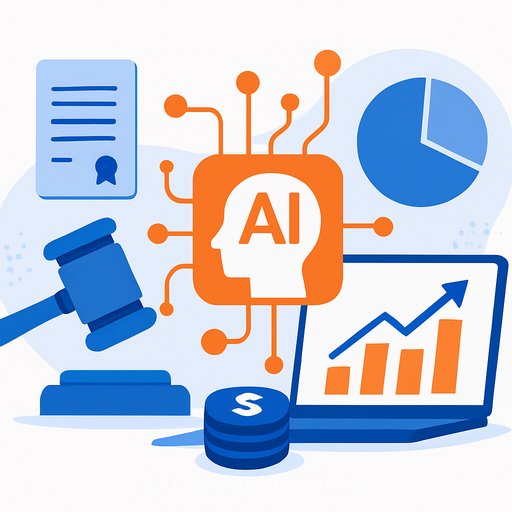China Amends Cybersecurity Law to Center AI Safety and Development
China's top legislature has approved an amendment to the Cybersecurity Law that adds a dedicated article on safe and sound AI development. The revision, set to take effect on Jan. 1, 2026, formalizes expectations for research, infrastructure, ethics, and risk controls across AI systems.
The move answers a clear market signal: AI adoption is surging, and so are security concerns. Lawmakers are drawing a tighter line between innovation and accountability, giving engineers, product leads, and legal teams a concrete framework to work against.
What's in the amendment
- Support for foundational research and key algorithmic innovation.
- Buildout of AI-related infrastructure.
- Stronger ethical standards for AI design and deployment.
- Expanded security risk monitoring and stricter AI safety regulations.
Officials framed the update as a direct response to the growing need for AI governance and technical safeguards. The goal: raise the floor on safety without stalling progress.
Policy alignment and legal coordination
The amendment stresses better alignment with existing laws, including the Civil Code and the Personal Information Protection Law (PIPL). Expect tighter interoperability across data rules from collection to deletion, clearer liability boundaries, and fewer gray zones in cross-law enforcement.
Penalties are clarified and increased. Serious violations can trigger suspension, closure, or even license revocation-an explicit signal that compliance is expected to be engineered in from the start.
Why now
AI adoption in China is scaling fast. A recent report notes the country ranks second globally in AI innovation, and as of June 2025, generative AI users reached 515 million-double just six months prior, per CNNIC.
Risk is climbing in parallel. The National Computer Virus Emergency Response Center reported a marked rise in AI-related network and data security incidents in 2025, with network attacks at 29 percent and data breaches at 26 percent of cases surveyed.
What it means for engineering, product, and legal
- Security-by-design for AI: bake threat modeling, secure coding, and continuous red-teaming into model and app lifecycles.
- Model risk management: establish evaluation gates for safety, bias, privacy leakage, and content controls before release.
- Data governance: map data lineage, legal bases, retention, and deletion. Verify dataset provenance and licensing for training and fine-tuning.
- Monitoring and incident response: log model behavior, prompt/response telemetry, and data access; define AI-specific incident runbooks.
- Vendor and API controls: contract for security, uptime, and audit cooperation. Validate third-party model updates and policy changes.
- Documentation and audits: maintain technical files, risk assessments, and decision logs to demonstrate compliance.
- User safeguards: age gates, abuse detection, rate limiting, and escalation paths for consumer-facing AI features.
Voices from the legislature and academia
Lawmakers called for forward-looking assessments and continuous monitoring to keep AI uses compliant, transparent, and accountable. The message from researchers is blunt: security can't be an afterthought-it has to be part of the build process.
Enforcement and penalties
The amended law raises fines and clarifies violations tied to AI-related risks. For severe cases, authorities may suspend operations, shutter services, or revoke business licenses. That enforcement range is designed to deter shortcuts and encourage internal controls that stand up to scrutiny.
Timeline and next steps
- Effective date: Jan. 1, 2026.
- Near-term focus: gap assessments against the new AI safety and monitoring requirements; cross-law alignment with PIPL and the Civil Code.
- Program buildout: establish an AI risk committee, appoint accountable owners, and integrate safety gates into CI/CD and MLOps.
Practical checklist to get ready
- Inventory all AI systems, data sources, and vendors; classify by risk.
- Define policy for training data provenance, privacy, and IP reuse.
- Implement pre-release model evals for security, bias, and safety; set pass/fail thresholds.
- Instrument production with anomaly detection, abuse monitoring, and rollback mechanisms.
- Update incident response to cover model drifts, prompt exploits, and data leakage.
- Align user-facing disclosures and consent flows with data practices.
- Prepare evidence: risk registers, DPIAs, audit logs, and model cards.
The bigger picture
China's amendment formalizes a trend we're seeing globally: AI teams are expected to prove that systems are safe, fair, and secure-continuously, not just at launch. Organizations that operationalize these controls in engineering workflows will move faster with fewer surprises.
If your team needs structured upskilling on AI safety, governance, and tooling by role, see our curated paths here: Complete AI Training - Courses by Job.
Your membership also unlocks:










